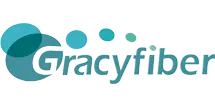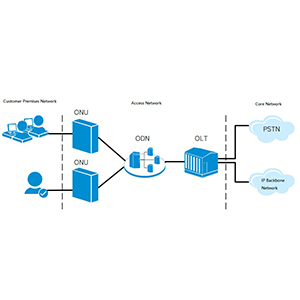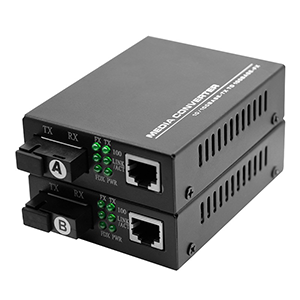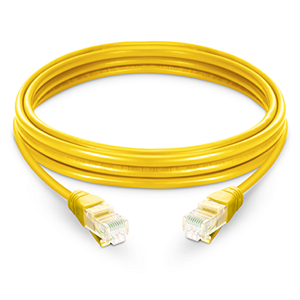As someone interested in high-speed data transmission and fiber optic technology, I am very excited to introduce you to DAC fiber optic cables and AOC fiber optic cables. DAC fiber optic cable is a direct-attached copper cable fiber optic transmission solution, while AOC fiber optic cable is an active fiber optic cable solution that uses optical fiber for data transmission. In this article, I will introduce you to their basic principles, applicability and advantages, as well as their applications in areas such as data center networks and supercomputers.
Introduction to DAC fiber optic cable
DAC (Direct Attach Copper) fiber optic cable is a direct-attached copper cable fiber optic transmission solution used to transmit high-speed data over short distances. It is a hybrid cable that integrates optical fiber and copper cables. Both ends are connected to optical modules and network equipment, such as switches, servers or storage devices.
The basic principle of DAC fiber optic cable is to use copper cables to transmit electrical signals instead of traditional fiber optic transmission. In DAC fiber optic cable, the optical transmitter and receiver of the optical module are connected to both ends of the copper cable, and data is transmitted in the copper cable through electrical signals. This direct-connect design eliminates fiber connectors and attenuation losses found in traditional fiber optic cables, simplifying the connection process and providing lower latency.
DAC fiber optic cables are widely used in short-distance high-speed data transmission scenarios, especially in data centers, enterprise networks, and storage networks. They provide reliable connectivity and high performance while reducing the complexity and cost of deployment and maintenance.
Introduction to AOC fiber optic cable
AOC (Active Optical Cable) fiber optic cable is an active optical cable solution that uses optical fiber for data transmission. It integrates fiber optics and photoelectric converters to transmit high-speed data over long distances. AOC fiber optic cables usually consist of optical fibers, photoelectric converters, drive circuits and external protective layers.
The basic principle of AOC fiber optic cable is to convert electrical signals into optical signals through an internal photoelectric converter, and then transmit the data through the optical fiber. In AOC fiber optic cable, photoelectric converters are located at both ends of the cable to convert electrical signals into optical signals and transmit them to the target device through the optical fiber. The design of this active optical cable enables longer transmission distances and provides higher bandwidth and anti-interference capabilities.
AOC fiber optic cables are widely used in many fields, especially in data centers, high-performance computing, remote monitoring, and audio and video transmission. They can provide high-speed, stable and reliable data transmission and are suitable for applications requiring long-distance transmission and high bandwidth.
Application areas of DAC and AOC fiber optic cables
DAC (Direct Attach Copper) fiber optic cable and AOC (Active Optical Cable) fiber optic cable are widely used in the following fields:
Data center network:
- DAC fiber optic cable: In data center networks, DAC fiber optic cable is commonly used for high-speed connections between servers. They connect directly to servers’ network interface cards (NICs) and switches, providing low-latency, high-reliability connections. DAC fiber optic cable is suitable for short-distance transmission, such as connections within cabinets or computer rooms, and can meet the needs for high-speed data transmission between high-density servers and storage devices.
- AOC fiber optic cable: AOC fiber optic cable is used in data center networks to connect servers and interconnect with network equipment. Because AOC fiber optic cables support long-distance transmission and high bandwidth, they can achieve high-speed data transmission across cabinets, computer rooms, or data centers. AOC fiber optic cable is suitable for large-scale data center networks and can meet ultra-high bandwidth and low latency requirements.
Supercomputer:
- DAC fiber optic cable: In supercomputers, DAC fiber optic cable is often used to connect computing nodes for high-speed communications. Supercomputers usually consist of a large number of computing nodes that require high-speed data transmission and collaborative computing. DAC fiber optic cables provide low-latency, high-reliability connections and are suitable for short-distance communications within supercomputers to support large-scale computing tasks.
- AOC fiber optic cable: AOC fiber optic cable is used in supercomputers to support large-scale computing and high-speed data transmission. Supercomputers often need to transmit data between different cabinets, computer rooms or even different buildings, which requires solutions that support long-distance transmission and high bandwidth. AOC optical fiber cables can provide stable, high-speed data transmission and meet the needs of supercomputers for large-scale parallel computing and data communication.
Features and advantages of DAC and AOC fiber optic cables
DAC (Direct Attach Copper) fiber optic cable and AOC (Active Optical Cable) fiber optic cable have the following features and advantages:
Transmission rate and distance:
- DAC fiber optic cable: DAC fiber optic cable supports multiple transmission rates, including 10G, 25G, 40G, 50G and 100G, etc. For short-distance transmission, such as connections within a data center or within a cabinet, DAC fiber optic cable can provide high-speed transmission with low latency and high reliability.
- AOC fiber optic cable: AOC fiber optic cable also supports multiple transmission rates, including 10G, 25G, 40G, 50G and 100G, etc. Compared with DAC fiber optic cable, AOC fiber optic cable is suitable for longer transmission distances, usually up to tens to hundreds of meters. They enable high-speed data transmission across cabinets, computer rooms, or data centers.
Interface type and connector:
- DAC fiber optic cable: DAC fiber optic cable supports a variety of interface types and connectors, such as SFP (Small Form-factor Pluggable), QSFP (Quad Small Form-factor Pluggable), etc. These interface types and connectors are compatible with interface cards (NICs) and ports on network devices such as servers, switches, routers, etc., providing easy plug-and-play connections.
- AOC fiber optic cable: AOC fiber optic cable also supports a variety of interface types and connectors, such as SFP+, QSFP+, etc. They are also compatible with interface cards and ports on servers, switches, routers and more, allowing for fast, reliable fiber optic connections.
Whether it is DAC fiber optic cable or AOC fiber optic cable, they all have the following advantages:
- Simplified deployment: DAC and AOC fiber optic cables can be directly plugged into the interface cards and ports of the device without the need for additional optical modules, thus simplifying the deployment and maintenance process.
- Low power consumption: Fiber optic cables use optical signals to transmit data, and they have lower power consumption and heat generation than copper cables, helping to reduce energy consumption and cooling requirements.
- Anti-interference: Optical fiber cables have high anti-interference ability against electromagnetic interference and signal attenuation, which can maintain the stability and reliability of data transmission.
- High bandwidth: DAC and AOC fiber optic cables support high-speed transmission, can meet the demand for large bandwidth, and are suitable for applications such as processing large amounts of data and high-performance computing.
Comparison of DAC and AOC fiber optic cables
DAC (Direct Attach Copper) fiber optic cable and AOC (Active Optical Cable) fiber optic cable differ in the following aspects:
Construction and Materials:
- DAC fiber optic cable: DAC fiber optic cable is composed of copper conductors, similar to traditional copper cables. It consists of a pair of copper wires used to transmit electrical signals. Connectors on both ends usually use metal contacts, such as copper or nickel, to ensure a good electrical connection.
- AOC fiber optic cable: AOC fiber optic cable consists of optical fiber and photoelectric converter. Optical fibers are used to transmit optical signals, while photoelectric converters convert electrical signals into optical signals or vice versa. The connector of AOC fiber optic cable is usually an optical module, such as SFP+ or QSFP+ module, which contains optical fiber and photoelectric converter.
Performance and features:
- Transmission distance: DAC fiber optic cable is suitable for short-distance transmission, usually in the range of several meters to more than ten meters. AOC fiber optic cable can support longer transmission distances, usually up to tens to hundreds of meters.
- Bandwidth: Both DAC fiber optic cable and AOC fiber optic cable can support high-bandwidth transmission, including 10G, 25G, 40G, 50G and 100G rates.
- Power consumption: DAC fiber optic cable uses copper wires to transmit electrical signals and has relatively low power consumption. AOC fiber optic cable uses optical fiber to transmit optical signals, and the power consumption is relatively high because the photoelectric converter requires additional energy for signal conversion.
- Cost: Generally, DAC fiber optic cables are relatively cheap because they use copper conductors instead of fiber optics and photoelectric converters. AOC fiber optic cables are relatively expensive because they use high-performance components such as optical fibers and photoelectric converters.
Selection and application scenarios of DAC and AOC optical fiber cables
When choosing DAC (Direct Attach Copper) fiber optic cable or AOC (Active Optical Cable) fiber optic cable, you can consider the following guidelines:
-
Transmission distance: If high-speed data transmission is required over short distances, such as within a cabinet or within a data center, DAC fiber optic cable is an economical and reliable choice. If high-speed data transmission is required across longer distances, such as across cabinets, across computer rooms, or across data centers, AOC fiber optic cable is a more suitable choice because it can support longer transmission distances.
-
Bandwidth requirements: Select the transmission rate of the DAC or AOC fiber optic cable according to the amount of data that needs to be transmitted and the bandwidth requirements. For example, for a transmission rate of 10Gbps, you can choose 10G DAC or 10G AOC. For higher transmission rates, such as 25Gbps, 40Gbps, 50Gbps or 100Gbps, corresponding DAC or AOC optical fiber cables are required to meet the needs.
-
Cost considerations: DAC fiber optic cables are generally more affordable than AOC fiber optic cables because they use copper conductors and do not involve high-cost components such as fiber optics and photoelectric converters. If your budget is limited, you can choose DAC fiber optic cable to reduce costs. However, for longer transmission distances and higher performance requirements, AOC fiber optic cables may be a more suitable choice, despite their higher cost.
According to different application scenarios, DAC and AOC optical fiber cables have their own applicability. The following are some typical application cases:
-
Internal data center connections: DAC fiber optic cables can be used for high-speed data transmission between cabinets within the data center. For example, for short-distance connections between servers, switches, and storage devices.
-
Computer room interconnection: When different cabinets or equipment need to be connected across the computer room, AOC fiber optic cable is a more suitable choice. They can support longer transmission distances and maintain high-speed and stable data transmission.
-
Supercomputers and high-performance computing: In environments that require processing large amounts of data and high-performance computing, AOC fiber optic cables can provide high-bandwidth and low-latency connections to meet computing needs.
-
Data storage network: For applications that require fast and reliable data storage and access, such as storage area networks (SAN), AOC fiber optic cables can provide high-performance and high-bandwidth connections.
Summarize:
DAC fiber optic cable has the advantages of low latency, high reliability and easy deployment, and is suitable for high-speed data transmission scenarios. AOC fiber optic cable has the advantages of long-distance transmission, high bandwidth and anti-interference ability, and is suitable for scenarios with high transmission distance and bandwidth requirements.
They support different transfer rates and interface types, and play an important role in areas such as data center networks and supercomputers. When selecting, you can choose based on their structure, performance and characteristics according to specific needs and application scenarios. Hopefully this article has provided you with valuable information about DAC fiber optic cables and AOC fiber optic cables and helped you better understand and apply these advanced fiber optic transmission solutions.
- What is the difference between a DAC and AOC cable?
- What is the difference between 100G AOC and DAC?
- What is an AOC cable?
- Which audio transmission technique is better AOC or DAC?
- What is a DAC cable?
- How long can DAC cable be?
- Why use DAC cable?
- Are all DAC cables the same?
- Is a DAC cable copper or fiber?
-
100G QSFP28 to 2x50G QSFP28 active branch cable
-
100G QSFP28 to 2x50G QSFP28 active branch optical cable
-
100G QSFP28 to 2x50G QSFP28 passive branch cable
-
100G QSFP28 to 4-duplex LC active branch optical cable
-
100G QSFP28 to 4x25G SFP28 active branch cable
-
100G QSFP28 to 4x25G SFP28 active branch optical cable
-
100G QSFP28 to 4x25G SFP28 passive branch cable
-
200G QSFP-DD to 2x100G QSFP28 active branch optical cable
-
200G QSFP-DD to 2x100G QSFP28 passive branch cable




